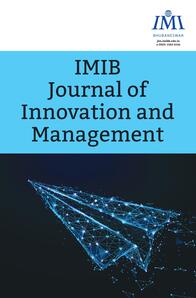
1 International Management Institute, Bhubaneswar, Odisha, India
2 Indian Institute of Management, Bodh Gaya, Bihar, India
Creative Commons Non Commercial CC BY-NC: This article is distributed under the terms of the Creative Commons Attribution-NonCommercial 4.0 License (http://www.creativecommons.org/licenses/by-nc/4.0/) which permits non-Commercial use, reproduction and distribution of the work without further permission provided the original work is attributed.
The risk-return trade-off is fundamental to portfolio investing whose stability is critical for portfolio optimisation. Since the relationship is dynamic, the portfolio manager should know the point of change and, thereafter duration of the changed period with certainty. First, we have done Bayesian change point analysis, and then based on the analysis, the study identifies the regimes having equal statistical variance along with the corresponding average return in two most popular commodities, that is, copper and gold. It is found that risk-return trade-off is not stable. Further, in a higher volatility regime, only gold can be considered as a diversifiable commodity because a positive risk-return trade-off holds. But in a low volatility regime, both commodities lose their diversification properties as the risk-return relation becomes negative.
Risk return trade-off, commodity futures, Bayesian Change point, portfolio investing
Aslanidis, N., Christiansen, C., & Savva, C. S. (2016). Risk-return trade-off for European stock markets. International Review of Financial Analysis, 46, 84–103.
Baillie, R. T., & DeGennaro, R. P. (1990). Stock returns and volatility. Journal of financial and Quantitative Analysis, 25(2), 203–214.
Brandt, M. W., & Kang, Q. (2004). On the relationship between the conditional mean and volatility of stock returns: A latent VAR approach. Journal of Financial Economics, 72(2), 217–257.
Campbell, J. Y. (1987). Stock returns and the term structure. Journal of Financial Economics, 18(2), 373–399.
Campbell, J. Y., & Hentschel, L. (1992). No news is good news: An asymmetric model of changing volatility in stock returns. Journal of Financial Economics, 31(3), 281–318.
French, K. R., Schwert, G. W., & Stambaugh, R. F. (1987). Expected stock returns and volatility. Journal of Financial Economics, 19(1), 3–29.
Ghysels, E., Santa-Clara, P., & Valkanov, R. (2005). There is a risk-return trade-off after all. Journal of Financial Economics, 76(3), 509–548.
Glosten, L. R., Jagannathan, R., & Runkle, D. E. (1993). On the relation between the expected value and the volatility of the nominal excess return on stocks. The Journal of Finance, 48(5), 1779–1801.
Guo, H., & Whitelaw, R. F. (2006). Uncovering the risk–return relation in the stock market. The Journal of Finance, 61(3), 1433–1463.
Harvey, C. R. (1989). Time-varying conditional covariances in tests of asset pricing models. Journal of Financial Economics, 24(2), 289–317.
Lettau, M., & Ludvigson, S. (2001). Consumption, aggregate wealth, and expected stock returns. Journal of Finance, 56(3), 815–849.
Lettau, M., & Ludvigson, S. (2010) Measuring and modelling variations in the risk return trade off. In Y. Ait-Sahalia & L. P. Hansen (Eds), Handbook of financial econometrics (Vol. 1, pp. 617–690). Elsevier Science B.V.
Ludvigson, S. C., & Ng, S. (2007). The empirical risk–return relation: A factor analysis approach. Journal of Financial Economics, 83(1), 171–222.
Nelson, D. B. (1991). Conditional heteroskedasticity in asset returns: A new approach. Econometrica: Journal of the Econometric Society, 59(2), 347–370.
Rossi, A. G., & Timmermann, A. G. (2010). What is the shape of the risk-return relation? https://papers.ssrn.com/sol3/papers.cfm?abstract_id=1364750
Ruggieri, E. (2012). A Bayesian approach to detecting change points in climatic records. International Journal of Climatology, 33, 520–528.
Ruggieri, E., & Antonellis, M. (2016). An exact approach to Bayesian sequential change point detection. Computational Statistics & Data Analysis, 97, 71–86.
Scruggs, J. T. (1998). Resolving the puzzling intertemporal relation between the market risk premium and conditional market variance: A two-factor approach. The Journal of Finance, 53(2), 575–603.
Thies, S., & Molnár, P. (2018). Bayesian change point analysis of Bitcoin returns. Finance Research Letters. https://doi.org/10.1016/j.frl.2018.03.018